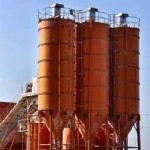
Panama – In its soon to be released report, “Latin America and the Caribbean: Environment Outlook GEO LAC 3”, the United Nation Environment Programme (UNEP) is warning that the region needs to take a step forward to sustainably manage its natural resources and effectively counteract the forces that are leading to environmental degradation.
This third report in a series prepared by UNEP on the state of the environment in Latin America and the Caribbean notes that the greatest challenge is to guarantee the development of environmental strategies, the creation of bodies specialized in the establishment of institutional and legal frameworks, and the ratification of international conventions.
The GEO LAC 3 study will also highlight the positive efforts already being carried out, for example, in Brazil to stop Amazonian deforestation, in Uruguay’s energy strategy to encourage the incorporation of alternative fuel sources, or payments for environmental services such as those done in Bolivia, Colombia, Costa Rica, Mexico, and Nicaragua.
The report points out the urgent necessity of achieving consensus that effectively promotes sustainable development, integrates environmental considerations and the value of ecosystems and environmental services into development policy in the run-up to the Rio+20 meeting to be held in Brazil in 2012.
According to the study, some countries in Latin America and the Caribbean have advanced in the transition process towards an environmentally sustainable economy. There are the experiences of Brazil, a world leader in recycling, with a national industry employing nearly 170,000 people, or in the Caribbean Hotel Energy Action Programme which encourages the implementation of energy-efficiency practices in the tourism sector.
Yet, in spite of these advances, the environment in the region does not receive the level of priority it deserves. In addition to the limited existence of comprehensive and cross-cutting environmental policies, the GEO LAC 3 report emphasizes the need to improve action, and coordination between the countries of the region. It also notes the importance of being able to rely on quality data concerning the state of the environment, and to increase the level of investment for achieving environmental and social sustainability, essential for the continued development in the region.
According to the study, greater prosperity and development in the region depends on the joint efforts of national and local governments, citizens and civil society organizations which must work together in a consensual manner to resolve the environmental challenges facing Latin America and the Caribbean.
The growing interest and willingness to tackle environmental themes is evident in the agendas of different sectors national and local governments, civil society and business organizations and universities and research institutes and offers an opportunity to confront environmental degradation and establish the basis for advancing toward a more sustainable model of development, the report stresses.
The State of the Environment in Latin America and the Caribbean
Climate change, loss of biological diversity, environmental degradation, emergencies caused by natural disasters, water scarcity, and accelerated urbanization that the region is experiencing make it necessary to make urgent and decisive changes in environmental management, according to the UNEP report.
Historically, the drivers of the regional development model have been based in the production of food, primary materials, and natural resources. This model has generated economic growth, the study notes, but also environmental degradation and societal breakdown. The tendency toward the concentration of income and an inequitable division of the benefits of this growth has led to Latin America and the Caribbean being the region with the highest level of inequality in the world.
The region possesses great environmental richness. The six countries (Brazil, Colombia, Ecuador, Mexico, Peru, and Venezuela) are among those countries with the greatest biodiversity in the world. Although promising efforts of environmental protection have been launched, this rich diversity is presently under threat.
GEO LAC Highlights the UNEP Green Economy Initiative
This initiative seeks to accelerate the transition toward an environmentally sustainable economy. Three documents are central to this initiative:
i) the report on the Green Economy;
ii) the report on Green Jobs; and
iii) the report of the evaluation of The Economics of Ecosystems and Biodiversity (TEEB).
It is estimated that five sectors will be those that generate the greatest economic returns:
1) clean energy and clean technologies, including recycling;
2) rural energy, including renewables;
3) sustainable agriculture, including organic production;
4) ecosystem-based economic infrastructure; reducing emissions from deforestation and forest degradation (REDD); and
5) sustainable cities, including planning, transportation, and green buildings.
Loss of Water Resources. The countries of Latin America and the Caribbean face the challenge of designing and implementing efficient strategies for sustainable water use. Even though the region as a whole contains a great quantity of water, disparities are present within a single country, with areas where critical water shortages exist and where the inhabitants of the Caribbean islands have the greatest limitations on the availability of fresh water. This situation is compounded by the fact that there is a notable increase in water demand, due to human consumption, as well as, among other factors, an increase in the extent of irrigated agriculture.
The availability of water could be affected by climate change, as well, especially by the loss of glaciers. GEO LAC 3 underscores that, according to the Fourth Report of the Intergovernmental Panel on Climate Change (IPCC), by 2050 the number of persons affected by the increasing water shortages in Latin America and the Caribbean will be between 79 and 178 million.
Threats to Caribbean countries as a result of climate change:
- Increased saltwater intrusion
- Floods
- Land degradation
- Destruction of agricultural crops, homes and livelihoods
- Destruction of vital physical and social infrastructure
- Fresh water contamination
Changes in Agriculture. Due to international market demand for products such as grains and soy bean, and given the growth in these and national markets for beef cattle and poultry, the land surface area dedicated to agriculture has increased. The region is transforming its farming practices to respond to the new economic model, which wants to increase trade. But at the same time, the region suffers a growing weakness in its capacity to produce basic foodstuffs, which has resulted in a significant increase in agricultural imports.













